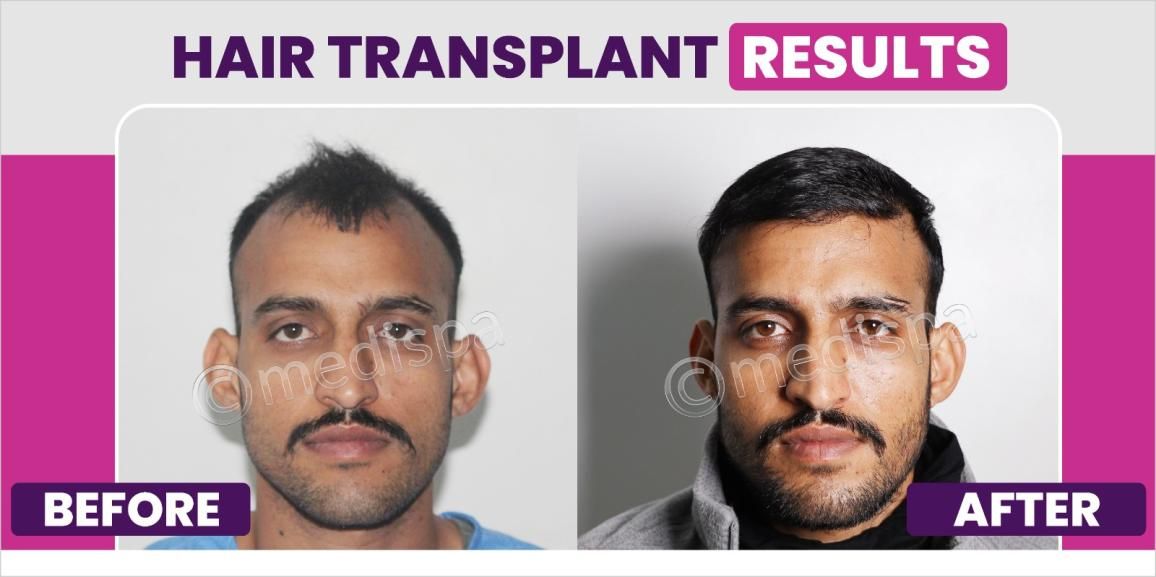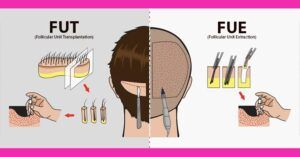
Hair transplantation surgery is a minimally invasive procedure that aims to stimulate hair growth on areas with bald spots. It is important to note that this procedure does not guarantee the regrowth of lost hair, but rather involves relocating hair follicles from areas with higher hair density to the bald spots.
Medispa Hair Transplant Clinic, led by the highly esteemed surgeon Dr. Suneet Soni, is renowned internationally for its exceptional team and services. We take a holistic approach to meet your specific requirements, offering a personalized and tailored hair transplant solution.
While hair transplant in Gurgaon is quite common, they can be expensive due to the high cost of living in the city. However, Delhi also provides hair transplant services at a more reasonable price, in addition to maintaining excellent quality standards.
It is important to note that the hair transplant cost in Gurgaon should not be the sole factor in determining the quality of the procedure. The reputation of the surgeon and the clinic will ultimately determine the success of the procedure.
If you are seeking to regain your hair with improved aesthetics and maximum hair growth, we invite you to book an appointment at Medispa Hair Transplant Clinic in Delhi. Our dedicated team will provide you with sincere advice and an exceptional hair transplant experience. A single consultation with us has the potential to transform your life and restore your lost confidence.
Hair transplant procedure
Hair transplantation is a minor surgical procedure commonly chosen by individuals experiencing hair loss in order to permanently address their baldness. This procedure can be utilized to treat baldness on the scalp as well as the face by extracting permanent hair roots from the donor area and transplanting them to the balding area. The donor area typically consists of regions on the body with permanent hair roots, such as the back and sides of the head, chest, axilla, and beard.
There are two primary methods for performing hair transplantation: Follicular Unit Transplantation (FUT) and Follicular Unit Extraction (FUE). These methods vary in how they extract the hair roots. In FUT, a strip of skin containing hair follicles is removed from the donor area, and the individual hair roots are then separated from the strip by a team of technicians using microscopes before being transplanted to the balding area. On the other hand, FUE involves individually selecting each hair root from the donor area and transplanting them to the balding area.
It is crucial for the donor area to have a sufficient quantity of hair roots to ensure adequate coverage during the hair transplant process, as the procedure relies on using the individual’s own hair for transplantation.
What happens to newly implanted hair follicles post hair transplant?
After a hair transplant, the newly transplanted hair follicles progress through the four phases of the typical hair growth cycle: anagen, catagen, telogen, and exogen. Each follicle may be at a different stage of the growth cycle. Once transplanted, the follicles will continue their cycle based on their current stage, leading to varying rates of growth from person to person and from follicle to follicle.
Week 1: To achieve optimal results from a hair transplant, it is crucial for the patient to diligently follow the postoperative instructions throughout the entire week. It is common for the patient to experience mild redness and swelling in the sides, back, and forehead, which typically subside within 4-5 days. Additionally, crust or flakes may form around the newly transplanted hair follicles, but these usually disappear around 10 days after the procedure.
Weeks 2-3: This phase is often referred to as the shock period, as you may notice that all of the newly transplanted hairs are shedding, leading you to believe that the transplant has failed. However, there is no need to worry, as this is a normal part of the hair growth cycle, and your efforts have not been in vain. Only the hair shaft is lost, while the hair follicles remain unharmed, preparing themselves to generate new hair shafts.
Week 1 through Week 2: During this timeframe, the hair follicles enter a resting phase and do not exhibit any visible changes in the balding area. Many individuals may feel disappointed during this period, as their appearance remains unchanged from before the procedure.
During the second to fourth months, the emergence of new, fine hair shafts from the bald spot brings a sense of hope. As time progresses, the thin hair shaft becomes more visible.
Moving on to the sixth month, a significant amount of hair growth is observed in the bald area, marking the peak of the process.
Between the sixth and ninth months, the donor region fully recovers, leading to coverage of a substantial bald area with hair. The texture of the thin hair shafts changes and thickens in the later months.
After one year, 80% of the hair growth becomes noticeable, resulting in a fuller appearance as the hair volume continues to increase.
How you can boost up your hair growth after hair transplant?
Following a hair transplant, there are several methods to expect accelerated hair growth, such as:
- Maintain a balanced, nutritious diet: A well-rounded diet is crucial for a speedy recovery and healing post-surgery. Faster hair growth necessitates the intake of recommended amounts of vitamins C, A, zinc, and iron.
- Regularly massage your scalp: Massaging enhances blood circulation, which undoubtedly aids in healing and growth. Therefore, it is important to follow the hair transplant surgeon’s instructions and massage the transplanted area once physical recovery is complete.
- Consider PRP therapy: PRP therapy is advised post-hair transplant to expedite hair growth and enhance the healing process. By injecting concentrated platelets extracted from your own blood, which are rich in growth factors, PRP therapy stimulates hair growth and repair in the targeted area.



